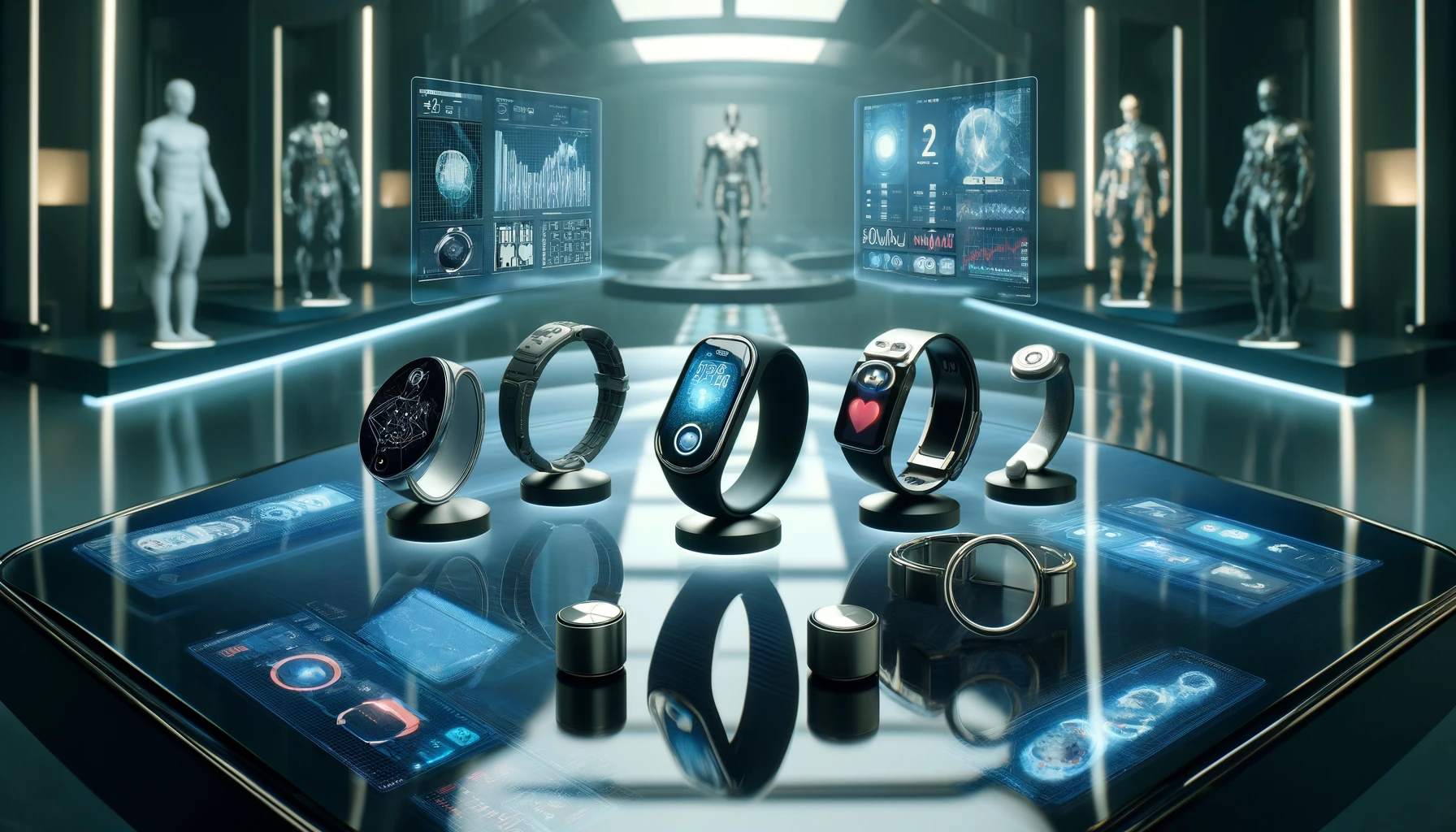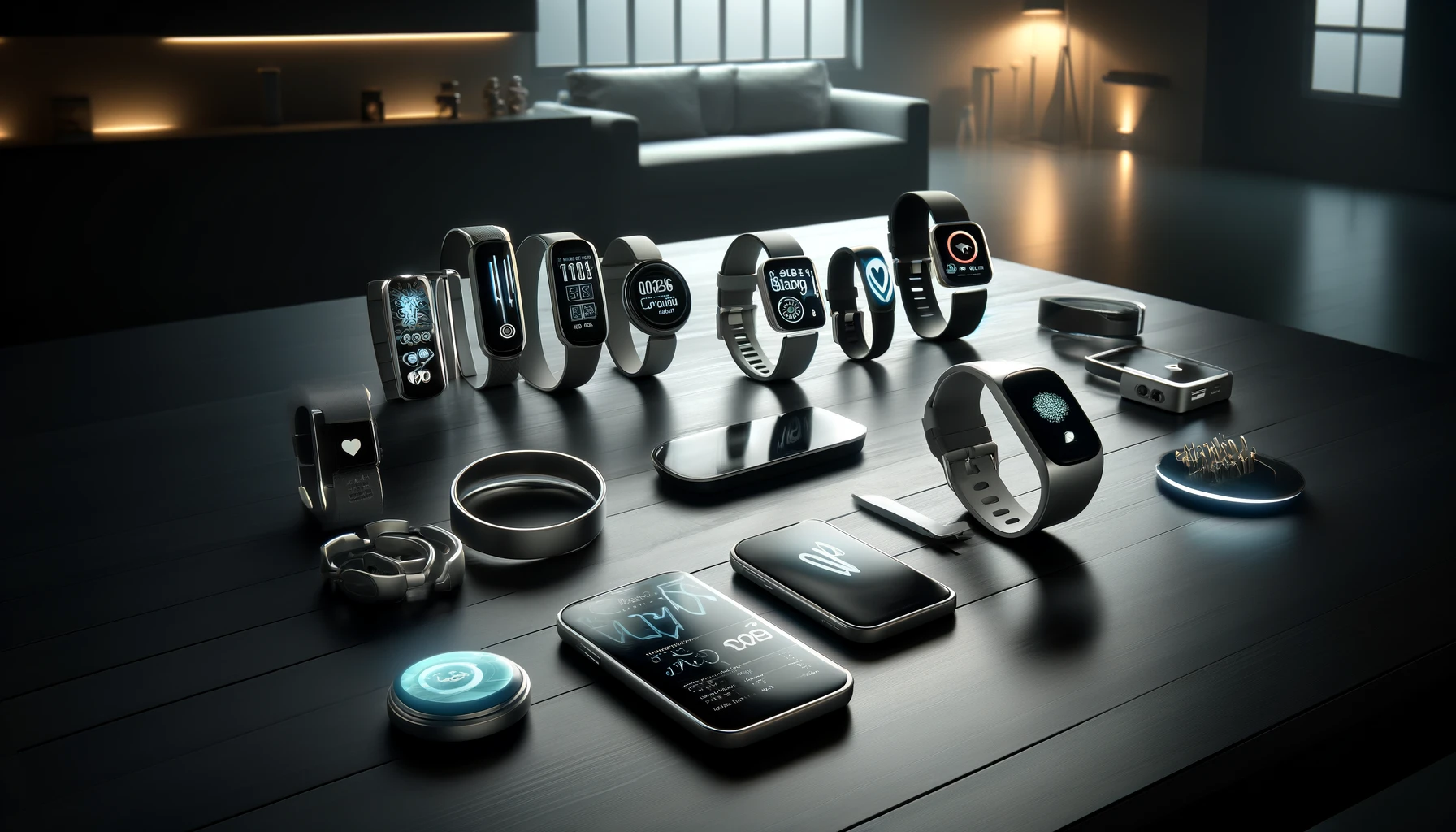Fitness trackers, smartwatches and biosensors are powerful tools that open new vistas in personal healthcare management. These devices enable people to take care of their health.
The Benefits
Continuous Health Monitoring
Devices today can track heart rate, activity levels, sleep patterns and even blood oxygen saturation. This continuous monitoring shows users their health data at any given moment. For instance, someone with a heart condition can monitor their heart rate during different activities throughout the day and adjust their actions accordingly to maintain optimal health.
Personalized Health Insights
Wearable devices do more than just collect data; they analyze it to provide personalized insights. Through advanced algorithms, these devices can assess individual health data and offer tailored advice. This feature enables users to understand their unique health patterns and trends. For example, if a device notices that the user sleeps poorly on nights after consuming caffeine, it can recommend avoiding caffeine close to bedtime to enhance sleep quality.
Proactive Health Management
Early detection of potential health issues is another profound benefit offered by wearable tech. Some advanced models are equipped with sensors that can detect irregular heart rhythms or drops in blood oxygen levels—conditions that might require immediate medical attention. This can be life-saving and also helps in managing ongoing health issues before they escalate into more severe problems.
Chronic Disease Management
For people with chronic conditions, e.g., diabetes or hypertension, wearable health technology can be particularly beneficial. You can constantly monitor health indicators, e.g., blood pressure and blood glucose levels. The ability to easily share this data with healthcare providers enhances the quality of care.
Motivation Through Gamification
Incorporating elements of gamification into health management, wearable tech motivates users to engage more actively with their health. Some features, e.g., activity competitions, badges and visual progress trackers, may become a funny experience. This encourages regular use of the device and promotes sustained healthy behaviors that contribute to long-term wellness.

The Limitations
Concerns Over Data Accuracy
One of the primary concerns with wearable health devices is the accuracy of the data they produce. Although technology has advanced significantly, discrepancies can still occur, particularly in lower-cost models or devices that are not specifically tailored for medical use. For example, heart rate readings can be affected by factors such as device placement, skin condition, and physical movement. It's essential for users to recognize these potential inaccuracies and consider consulting healthcare professionals when making health-related decisions based on this data.
Privacy and Data Security Risks
As wearable devices collect and store vast amounts of personal health information, they become prime targets for data breaches. The implications of compromised data are significant, ranging from privacy violations to potential misuse of sensitive health information. Users must be vigilant about the security measures adopted by their chosen devices, including encryption standards and data handling policies, and remain informed about the best practices for protecting their personal information.
Dependence on Companion Devices
Most wearable health tech requires synchronization with a smartphone or computer to fully access its features, which can be a limitation for users without these companion devices. This dependence can also affect the functionality of the wearable device if the companion device is lost, damaged, or outdated. For those living in areas with limited internet connectivity or those who are less tech-savvy, this dependency can reduce the usability and benefits of the wearable technology.
Battery Life and Maintenance
Another practical concern is the battery life of wearable devices. Frequent charging can become a hassle, especially for devices that require constant data monitoring. This can be particularly problematic for elderly users or those with chronic conditions who rely on these devices for continuous health monitoring. Regular maintenance and potential repair costs also add an additional layer of consideration for long-term usage.
Accessibility and Usability Challenges
Finally, the design and functionality of wearable health tech can present challenges for certain user groups. Individuals with disabilities, older adults, or those unfamiliar with the latest technology might find these devices difficult to use. The small screens and touch interfaces common in many wearables can be problematic for people with visual impairments or reduced manual dexterity. Therefore, it's crucial for manufacturers to consider inclusive design principles to ensure their products are accessible to a broader audience.
Addressing These Limitations
To overcome these challenges, continuous innovation and adherence to stringent quality and security standards are essential. Manufacturers must strive to improve the accuracy and reliability of their devices and ensure robust security measures are in place to protect user data. Additionally, creating more intuitive and accessible user interfaces will help make wearable tech more user-friendly for all demographics.

Balancing Benefits and Limitations: The Future of Wearable Health Tech
As we have explored the significant advantages and notable limitations of wearable health technology, it's clear that these devices represent a crucial development in personal health management. Moving forward, the trajectory of wearable tech in healthcare looks promising, with potential enhancements that could further solidify its role in improving patient outcomes and healthcare efficiencies.
Future Developments in Wearable Health Technology
Innovation in wearable technology is rapidly advancing, with new features and capabilities being developed that promise even greater integration into healthcare systems. Future generations of wearables are expected to include more advanced biometric sensors capable of monitoring a wider range of health indicators such as stress levels, hydration status, and advanced cardiac markers. These advancements will likely improve the accuracy and reliability of health data collected, offering deeper insights into personal health and well-being.
Moreover, the integration of artificial intelligence and machine learning algorithms will enhance the ability of wearable devices to provide real-time, actionable insights based on the collected data. This could lead to highly personalized healthcare recommendations and automated alerts to both users and healthcare providers, potentially predicting health events before they occur.
Enhancing Security and Privacy
As wearable health technology continues to evolve, so too must the strategies for protecting user data. Future devices will need to incorporate stronger encryption methods and more robust security protocols to ensure that personal health information remains secure. Additionally, regulatory frameworks may need to adapt to provide clearer guidelines and standards for data protection in wearable tech, ensuring user trust and compliance with global privacy laws.
Increasing Accessibility and Usability
Looking ahead, it is imperative that wearable technology becomes more accessible and user-friendly. This includes designing devices that are easier to use for all ages and abilities, improving battery life, and reducing dependence on companion technologies. Manufacturers should focus on creating inclusive devices that cater to a diverse user base, including those with disabilities, to truly universalize the benefits of wearable health tech.
Collaborations and Healthcare Integration
The future will likely see more collaborative efforts between tech companies and healthcare institutions to ensure that wearable technologies are seamlessly integrated into healthcare systems. This integration will enhance the continuity of care and ensure that health practitioners can rely on the data from wearables to make informed decisions about patient care.
Conclusion
Wearable health technology is more than just a passing trend; it is a fundamental shift in how individuals engage with their health and how healthcare providers deliver care. While there are limitations to current technologies, the potential for future development holds immense promise for improving personal and public health outcomes. By addressing current challenges and focusing on innovation, wearable tech can become an integral part of a more proactive, personalized, and preventive healthcare approach.
As HealthScreen continues to explore and report on these advancements, we remain committed to providing our readers with the most up-to-date and comprehensive information. Embracing the evolution of wearable health tech will undoubtedly play a pivotal role in shaping the future of healthcare, making it more accessible, efficient, and tailored to individual needs. The journey of wearable technology in healthcare is just beginning, and its full potential is yet to be realized.